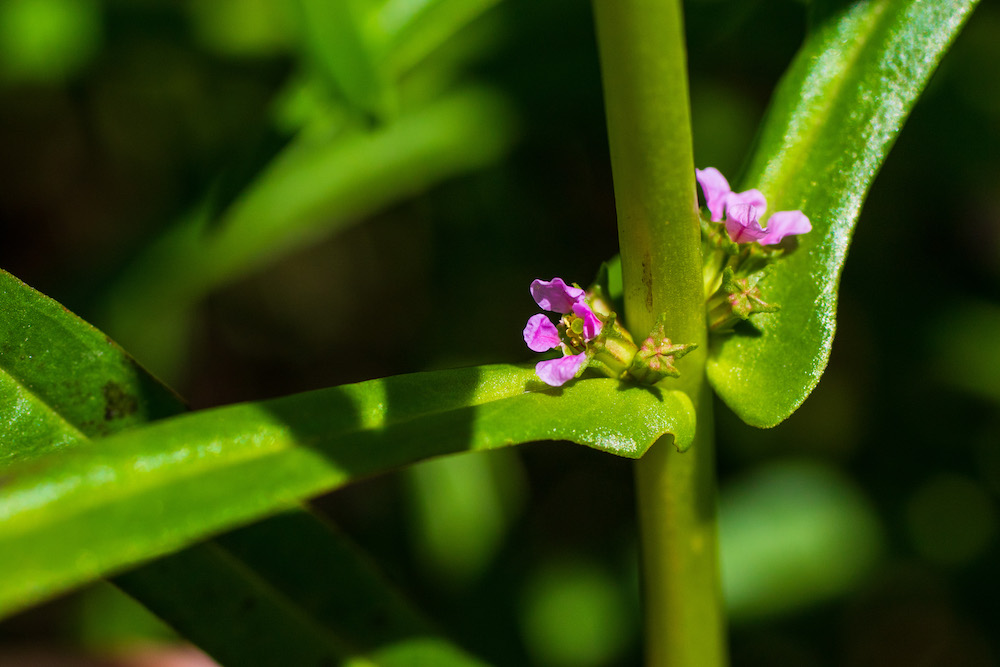
A bee taking advantage of a beggartick, which will provide duck food when it goes to seed.



A bee taking advantage of a beggartick, which will provide duck food when it goes to seed.
Photos by the author.

Duck hunters often refer to their favorite spots as “Honey-Holes,” where game is abundant and hunts are almost always successful. Look a little closer at these honey-holes in the summer and they are more than likely full of bees, butterflies and wildflowers. During the summer, seasonal and semi-permanent wetlands dry up, or at least appear to be dry. If you feel the soil, it is still cool and moist, providing optimal conditions for growing duck food. It isn’t simply duck food that is growing, but rather it is also a sweet nectar source for butterflies and a rich source of pollen for bees. A wetland with a wide variety of native plants is the sweetest of all honey-holes for it provides a little something for everyone.

A few wetland plants, or wet adapted plants, commonly found throughout the Midwest and favored by waterfowl and pollinators are Pennsylvania smartweed (Polygonum pensylvanicum), beggarticks (Bidens spp.), and toothcup (Ammannia coccinea). In the summer these plants provide pollen and nectar favored by butterflies and bees, but in the fall their flowers turn to seed that is devoured by puddle ducks. The wet/dry cycle creates the conditions these plants need to reseed themselves, as they require a disturbance every year or two to avoid being outcompeted by perennial species. Flooding is one type of disturbance, but other ways to get these plants to flourish is to burn or disk the wet/moist soils in the fall, which will set back succession and promote these annuals. On restored or created wetlands, the wet/dry cycle can be replicated through the use of water control structures and disking can be incorporated to ensure a productive wildlife food source.

Historically, seasonal wetlands could be found mixed within the tallgrass prairie in several parts of the state. Much like the tallgrass prairie, seasonal wetlands have been drained for agriculture or development, or sometimes excavated to create a fishing pond. These seasonal wetlands try to reclaim themselves every spring but drain-tile lines siphon water away from below, allowing water to stand in the field for a few short days before being whisked away to the rivers. The water is there just long enough to drown-out freshly planted corn or beans, requiring a replant or just poor crop-yield. Given the poor yield and extra costs for replanting within these former wetland basins, landowners and Illinoisans may want to consider restoring the wetlands and creating honey-holes. Not only will it provide pollinator habitat and more duck hunting opportunities, such actions also reduce nutrient runoff into streams and reduce damaging spring floods.

There are several options available to landowners wishing to create these honey-holes. The best option is to start by contacting a wildlife biologist with the U.S. Fish and Wildlife Service so they can review your properties for wetland restoration potential. Biologists can quickly review elevations, historic aerial imagery, and soil maps to evaluate whether or not a honey-hole is right for your property. To get started, email the Service’s Private Lands Office at illinoisplo@fws.gov. They will divvy up the workload from there. Perhaps the best part? The service is free.
Mike Budd is the Private Lands Coordinator for the U.S. Fish and Wildlife Service in Illinois. He has worked with private landowners for the majority of his 12-year career in natural resources, including stints with Ducks Unlimited. Originally from Michigan, Budd has had the opportunity to work in multiple states including Virginia, New York and Arkansas and is excited that Illinois has such a rich opportunity for wetland restoration. At each stop, he has picked up a new tip or trick from private landowners on how to restore wetlands efficiently and effectively. Budd, his son, daughter, wife and old retired duck-dog live in Sangamon County.
Submit a question for the author